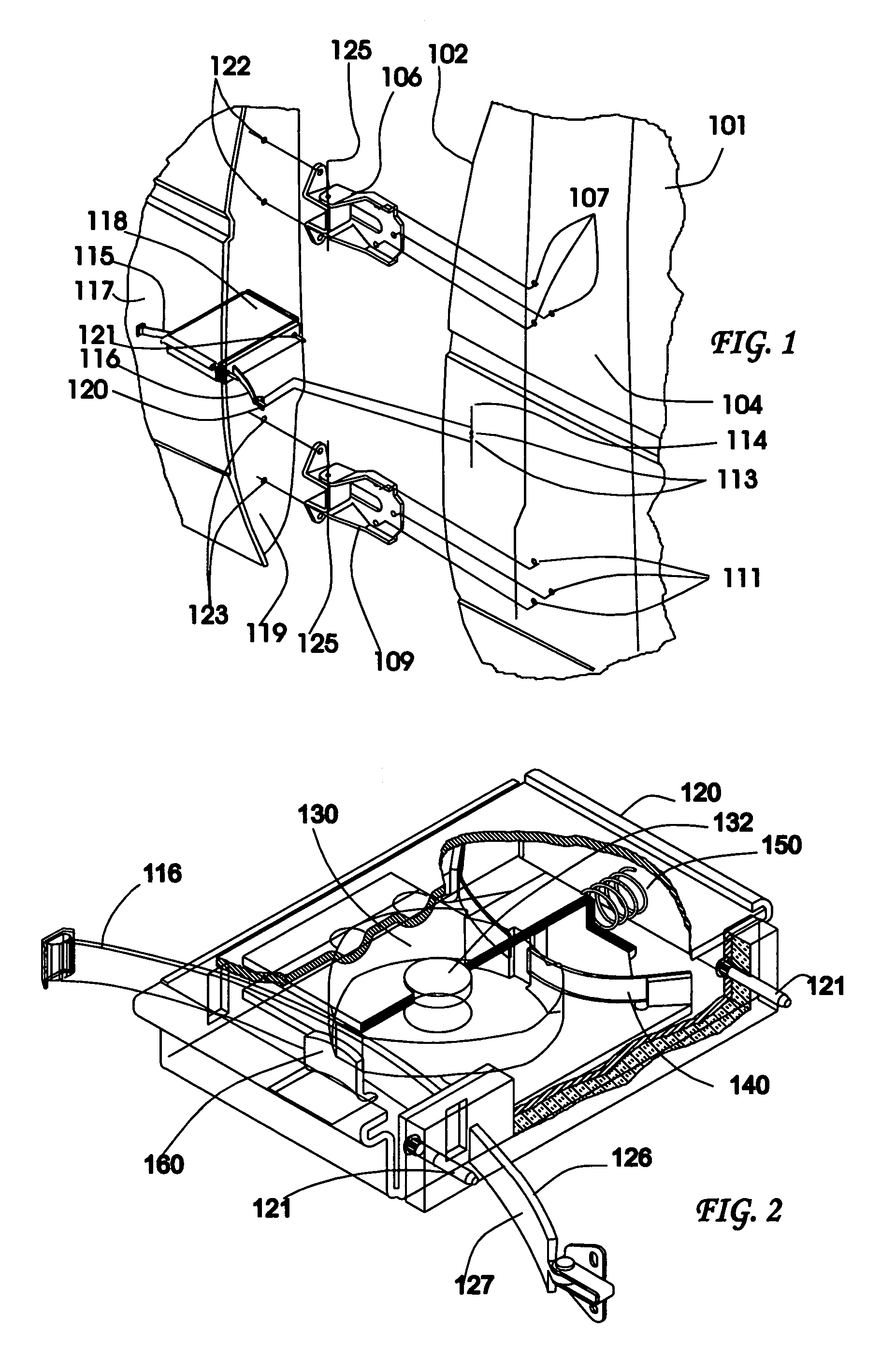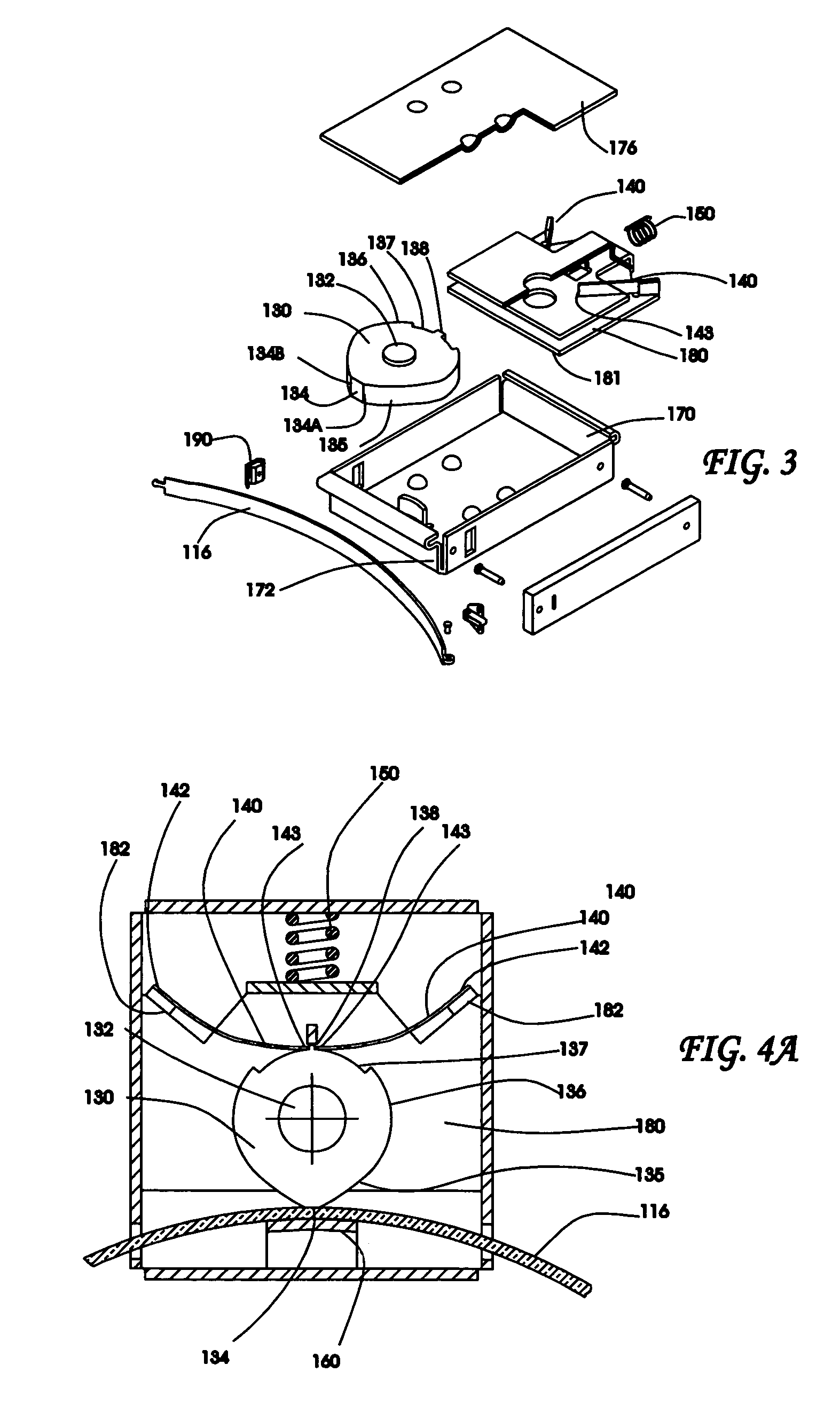However, they are far from uniform in construction or in application.
None has yet achieved commercial success due to the cost and complexity and well as the short service lives of these prior art mechanisms.
Door check mechanisms have in general exhibited some substantial difficulties over the years including: (i) the need in some designs for frequent
lubrication without which they tend to make undesirable noises; (ii) inadequate
operating life; (iii)
corrosion; (iv) the inability to endure vehicle body
processing temperatures associated with the curing of external finishes (400° F.
); (v) the inability to be easily separated from the vehicle after painting to permit the door to be separately trimmed and then reassembled to the body; (vi) the occurrence of unacceptable stress and wear on the door hinges caused by loading from the door check; and (vii) the requirement for frequent post installation adjustment during the vehicle life.
Each of these problems has been addressed in one or more of the prior art fixed
detent door checks but there is no infinite door check that has solved all of these problems.
Such a tendency, when in the closing direction, causes the door to strike the legs or other parts of a person entering or leaving the automobile.
When in the opening direction, it can cause the door to
impact into other people or objects inflicting harm or damage thereto.
A particularly costly problem, as reported by automobile insurance companies, happens in parking lots where the opening door of one vehicle bangs into an adjacent vehicle causing damage to the finish that can lead to an insurance claim.
This increases the cost of insurance to all automobile owners.
Problems arise with regard to
dirt,
moisture, temperature, wearing etc.
The continuous friction defeats the automatic door closing
system.
The frictional
locking mechanism is held in contact with the friction surfaces by means of a biasing spring that exerts its
maximum torque and thus creates the maximum wear when the mechanism is in the unlocked position.
The system requires careful alignment and is subject to wear.
The frictional drag works to prevent the door from closing under its own weight thus defeating that desirable function.
Although this is the goal, this cannot be achieved due to surface
contamination.
This may cause significant motion of the door to get to the nearest door
detent.
There also is an alignment problem with this device.
The device is complicated, requires adjustment, is sensitive to
dirt, and has no positive intermediate position.
The friction surfaces are knurled and adjustment is required during the life of the vehicle due to wear of
brake surfaces.
The checking motion is rather small, probably resulting in significant variation in the checked position from
vehicle to vehicle.
It uses a roller that rubs continuously on the friction surface resulting in a
wear problem.
For this reason, the hard rubber chosen as the friction surface is a poor choice since the
friction coefficient is strongly influenced by surface films.
This is unsustainable as surface films will radically change the friction coefficients.
Since significant friction is always present, there is a
wear problem resulting in a device with a
short life without adjustment.
The ball system gives
point contact, therefore higher forces and therefore greater wear.
Although the ball rolls in the groove, on which the patent makes a great issue, it is sliding on the elastomeric spring that pushes it down.
This sliding friction will cause wear and shorten the life of the door check.
There is no obvious
advantage to this overly complicated system since to deactivate the door holding system, the door must be moved which requires a force.
However, in this case, the hinge pin is still loaded when the door is moved into and out of the detented positions and thus the problem is only partially solved.
As a result, there is no successful infinite door
check in high volume commercial use at this time although the desire for such a device is well known in the industry.
 Login to View More
Login to View More  Login to View More
Login to View More 


